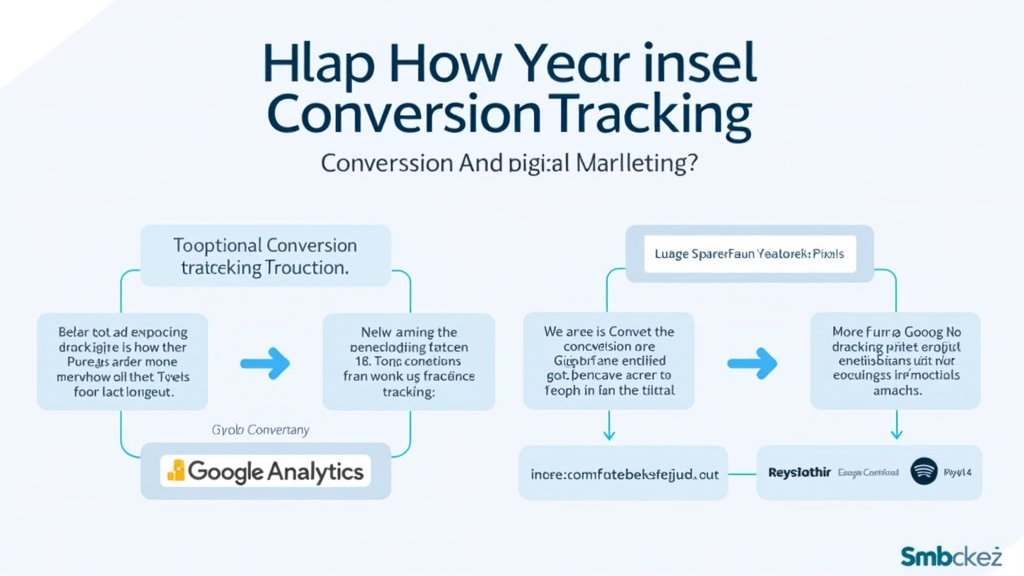Mastering Marketing: A Comprehensive Guide to Conversion Tracking Setup
Introduction
Understanding the Importance of Conversion Tracking in Marketing
In today’s digital world, understanding how your marketing efforts translate into actual results is crucial. This is where conversion tracking comes into play. By setting up conversion tracking, you can see which campaigns are driving sales or leads and which ones need improvement. It helps you make informed decisions that can lead to better marketing strategies and increased revenue. If you’re looking to enhance your marketing effectiveness, mastering conversion tracking is essential.
What is Conversion Tracking?
Definition and Purpose of Conversion Tracking
Conversion tracking is a method used by marketers to measure specific actions taken by users on their websites or apps. These actions could be anything from making a purchase to signing up for a newsletter. The primary purpose of conversion tracking is to determine how well your marketing campaigns are performing in achieving desired outcomes.
Types of Conversions in Digital Marketing
There are several types of conversions you might track:
- Sales Conversions: When a user completes a purchase.
- Lead Conversions: When a user fills out a contact form or subscribes.
- Engagement Conversions: Actions like video views or social shares.
- Download Conversions: When users download resources like eBooks or whitepapers.
Understanding these different types allows you to tailor your marketing efforts effectively.
Key Benefits of Setting Up Conversion Tracking
Improved ROI on Marketing Campaigns
One significant benefit of conversion tracking is the ability to improve your return on investment (ROI). By knowing which campaigns convert best, you can allocate more resources toward those efforts while reducing spending on less effective strategies.
Enhanced Data-Driven Decision Making
With accurate data at your fingertips, you can make smarter decisions about future campaigns. Instead of guessing what works, you’ll have concrete evidence guiding your choices, leading to more successful outcomes.
Optimizing Customer Journeys and User Experience
Conversion tracking also helps optimize customer journeys. By analyzing user behavior, you can identify drop-off points and areas for improvement on your website or app. Enhancing the user experience often leads directly to higher conversion rates.
How to Set Up Conversion Tracking: Step-by-Step Guide
Choosing the Right Tools for Conversion Tracking
The first step in setting up conversion tracking is selecting the right tools. Popular options include Google Analytics for website traffic analysis and Facebook Pixel for measuring ad performance on social media platforms. Each tool has its strengths depending on where you’re focusing your marketing efforts.
Implementing Tracking Codes: Google Analytics, Facebook Pixel, and More
Once you’ve chosen your tools, it’s time to implement tracking codes. For Google Analytics, you’ll need to add specific code snippets provided by the platform onto relevant pages of your site. Similarly, Facebook Pixel requires adding its unique code snippet so it can track conversions from ads run on their platform effectively.
Setting Up Goals and Events in Analytics Platforms
After implementing the codes, set up goals and events within each analytics platform. In Google Analytics, this involves defining what constitutes a conversion—like completing a purchase or signing up for an email list—so that it tracks these actions accurately over time.
Common Challenges in Conversion Tracking Setup
Troubleshooting Common Issues with Tracking Codes
While setting up conversion tracking may seem straightforward, challenges often arise with coding errors or misconfigurations that prevent accurate data collection. Common issues include missing tags or incorrect placement within HTML code that could lead to incomplete data reporting.
Ensuring Accuracy and Data Integrity
Another challenge lies in ensuring data accuracy and integrity throughout the process. Regularly checking if conversions are being tracked correctly will help maintain reliable insights into campaign performance over time.
Best Practices for Effective Conversion Tracking
Regularly Reviewing and Updating Your Setup
To keep pace with changing business goals or digital trends, regularly review and update your conversion tracking setup as needed. This ensures that you’re capturing all relevant data points without missing any important changes that could affect performance measurement.
Integrating with Other Marketing Tools for Comprehensive Insights
Integrating various marketing tools enhances overall insights gained from conversion data collected across platforms like email marketing software or CRM systems (Customer Relationship Management). This comprehensive approach allows businesses greater visibility into customer interactions along their journey towards converting into paying customers!
Conclusion
Recap of the Importance of Properly Configured Conversion Tracking
In summary, properly configured conversion tracking plays an essential role in modern digital marketing strategies by providing valuable insights into campaign effectiveness while helping optimize user experiences across channels! With improved ROI potential alongside enhanced decision-making capabilities derived from accurate analytics reports—setting up this system should be prioritized by every marketer aiming for success!
📢 Explore More: Continue Your Journey!
If this article helped you understand how crucial conversion tracking is for effective marketing strategies, check out The Ultimate Guide to Digital Marketing Metrics! It covers key metrics every marketer should know about optimizing their campaigns successfully.
👉 Click here to read more!














![NEEWER 55W 18"/45cm Ring Light Kit [New Version], 5600K Dimmable ...](https://m.media-amazon.com/images/I/414QLqvZWLL._AC_.jpg)








